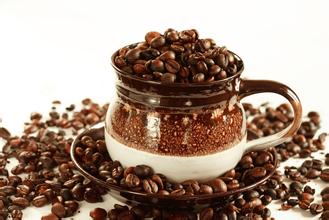The Development of Coffee in the course of Coffee Development & #160; Coffee Development China Coffee Network
It is gradually driven by Italian coffee represented by Starbucks and Costa in Europe and America after instant coffee. In China, the first second wave of coffee appeared on the basis of the first wave of coffee, with the gradual increase in the awareness of coffee among Chinese people and the Chinese market, and the emergence of conceptual cafes that mimic the rise of the second wave of coffee in Europe and the United States.
At the same time, Starbucks, the representative of the second wave of coffee in Europe and the United States, has explosively developed and expanded in China, and the "third space" built by Starbucks in the world has become the reason why people are infatuated with it. "in such a space, people's relationships are free and equal, without a sense of hierarchy in the workplace and without the shackles of various roles in the family, people can release themselves." Compared with the previous small cafes, Starbucks has built a perfect social and identity space. For the first batch of senior white-collar workers who patronize Starbucks, Starbucks has become "standard" for some kind of identity: high-income, tasteful and in line with international standards.
Take Shanghai, the home of foreign companies, as an example: Starbucks' sales in Shanghai reached 100 million yuan in two years after opening its first store on Shanghai Huaihai Road in 2000. Customers who know nothing about coffee but are curious can also feel relaxed at Starbucks. It has a stylish decoration and a comfortable atmosphere, but it is not as aggressive as other literary cafes. This is the kind of atmosphere Starbucks strives to create. It thoughtfully considers the habits of Chinese customers, such as Chinese consumers who prefer to eat in or near their stores, so most Starbucks stores in China offer more food and seats than in the United States. Considering that Chinese people like hot food, each store also has an oven, which makes Chinese customers who are used to drinking coffee in the afternoon or evening begin to patronize frequently in the morning. It is undeniable that the people-friendly concept of the second wave of cafes has indeed led to Chinese recognition and intimacy of coffee, and greatly enhanced the cultural heritage and national taste of a city.
The coffee wave can be said to be a revolution. It is precisely because the market is now flooded with a large number of products that fail to restore the quality of coffee itself, confusing the public's correct understanding of coffee, leading to the emergence of a group of advocates who really love fine coffee, who insist on providing fine coffee, spread authentic coffee culture, have exclusive cultural meaning, and provide coffee directly from the country of origin, as well as its exclusive culture and technology. So it can relatively attract people who really like coffee.
This kind of coffee shop, whether from the source of raw beans, roasting of coffee beans, the production of coffee, and even the selection of coffee cups have strict norms, the purpose is to return coffee to the true quality. The person in charge of this kind of coffee shop often has a deep attachment and understanding of boutique coffee and has the skills and knowledge including coffee bean roasting, coffee tasting and coffee making. It should be noted here that tasting coffee requires artistic feelings, but making coffee requires rigorous scientific methods, including the shelf life of coffee beans, the water temperature of brewing coffee, the way and time of water injection, etc., often accurate to 1 degree Celsius and a few seconds.

Important Notice :
前街咖啡 FrontStreet Coffee has moved to new addredd:
FrontStreet Coffee Address: 315,Donghua East Road,GuangZhou
Tel:020 38364473
- Prev

What are the unique characteristics of Colombian coffee flavor
Each caffeine variety has a different origin and has its own strong character, such as the masculine Mantenin, which resembles the character of an iron and steel man, and the mellow, fragrant Blue Mountain Coffee, which is called the gentle woman's yearning addiction. Columbia Super Coffee, which has always been light-scented, is the most suitable for those who like light sex. Such people do not want to drink coffee as a serious thing, from
- Next

Amp;#160; how to Bake Manning Coffee? what are the characteristics?
Manning coffee is considered to be the most mellow coffee in the world. When tasting Mantenin, you can feel obvious lubrication on the tip of the tongue and low acidity, but this acidity can also be obviously tasted. Leaping slight acid mixed with the richest aroma, so that you can easily feel the lively factor in the mild fragrance. In addition, this kind of coffee has a light taste.
Related
- Does Rose Summer choose Blue, Green or Red? Detailed explanation of Rose Summer Coffee plots and Classification in Panamanian Jade Manor
- What is the difference between the origin, producing area, processing plant, cooperative and manor of coffee beans?
- How fine does the espresso powder fit? how to grind the espresso?
- Sca coffee roasting degree color card coffee roasting degree 8 roasting color values what do you mean?
- The practice of lattes: how to make lattes at home
- Introduction to Indonesian Fine Coffee beans-- Java Coffee producing area of Indonesian Arabica Coffee
- How much will the flavor of light and medium roasted rose summer be expressed? What baking level is rose summer suitable for?
- Introduction to the characteristics of washing, sun-drying or wet-planing coffee commonly used in Mantenin, Indonesia
- Price characteristics of Arabica Coffee Bean Starbucks introduction to Manning Coffee Bean Taste producing area Variety Manor
- What is the authentic Yega flavor? What are the flavor characteristics of the really excellent Yejasuffi coffee beans?

